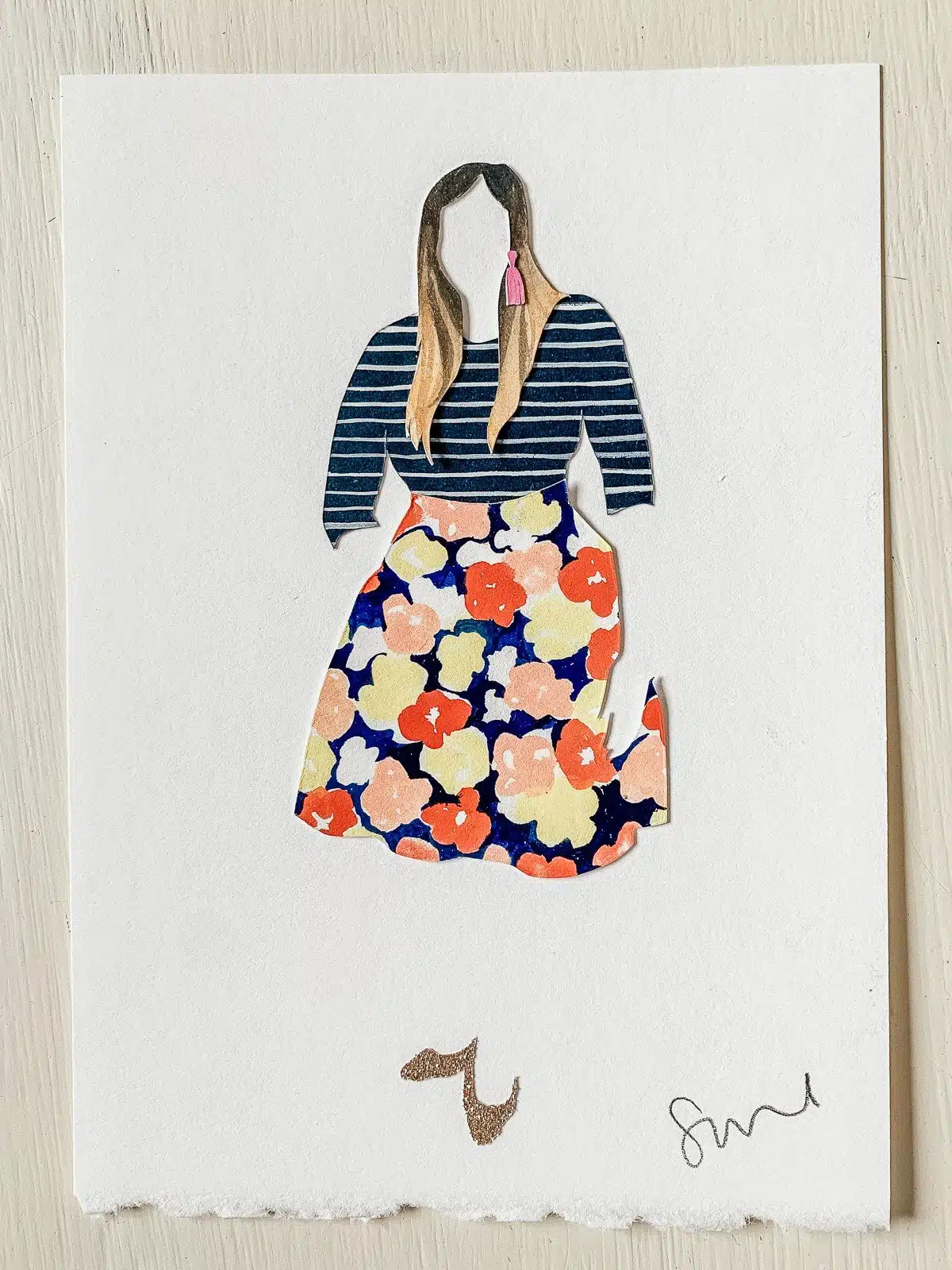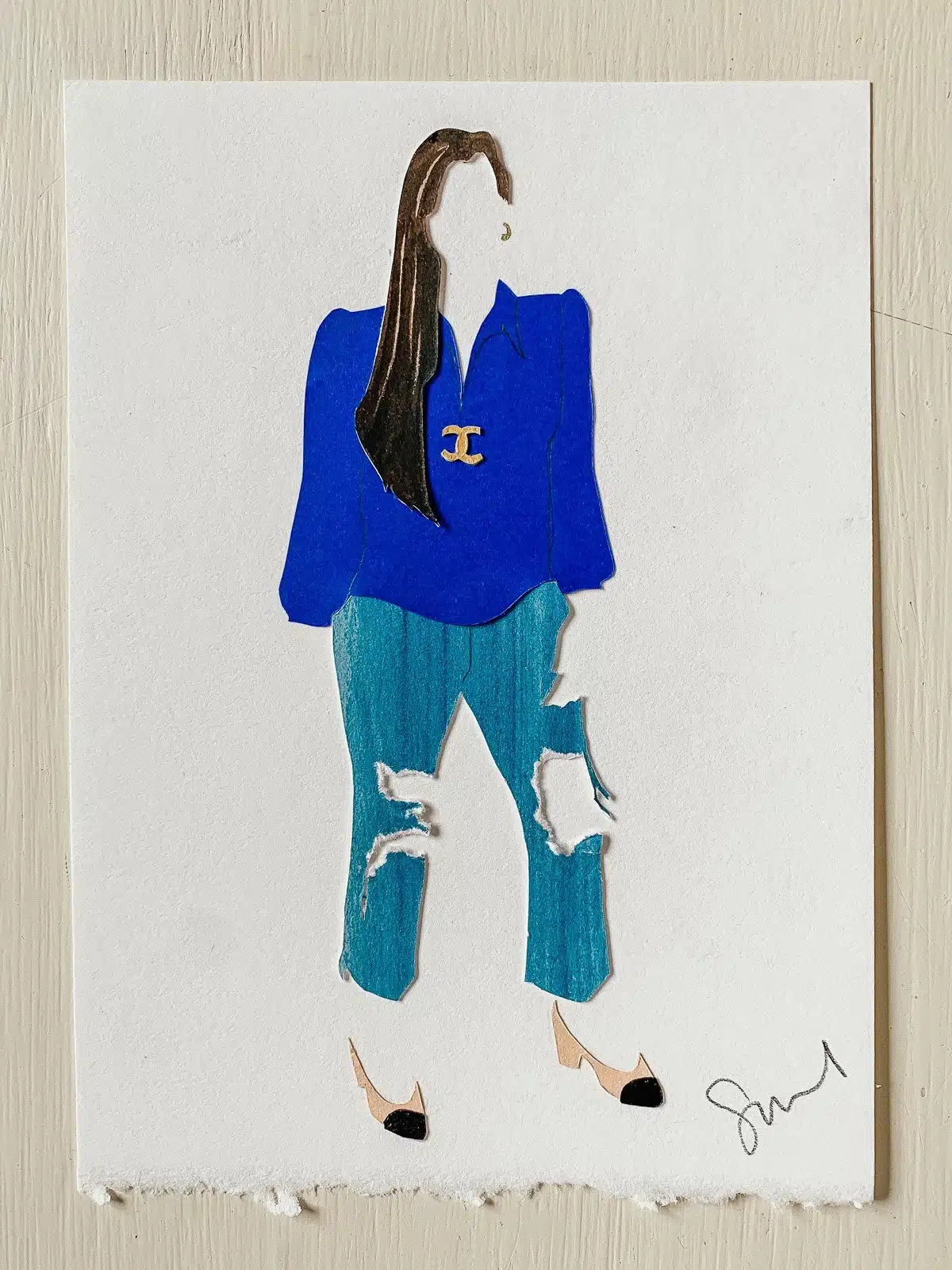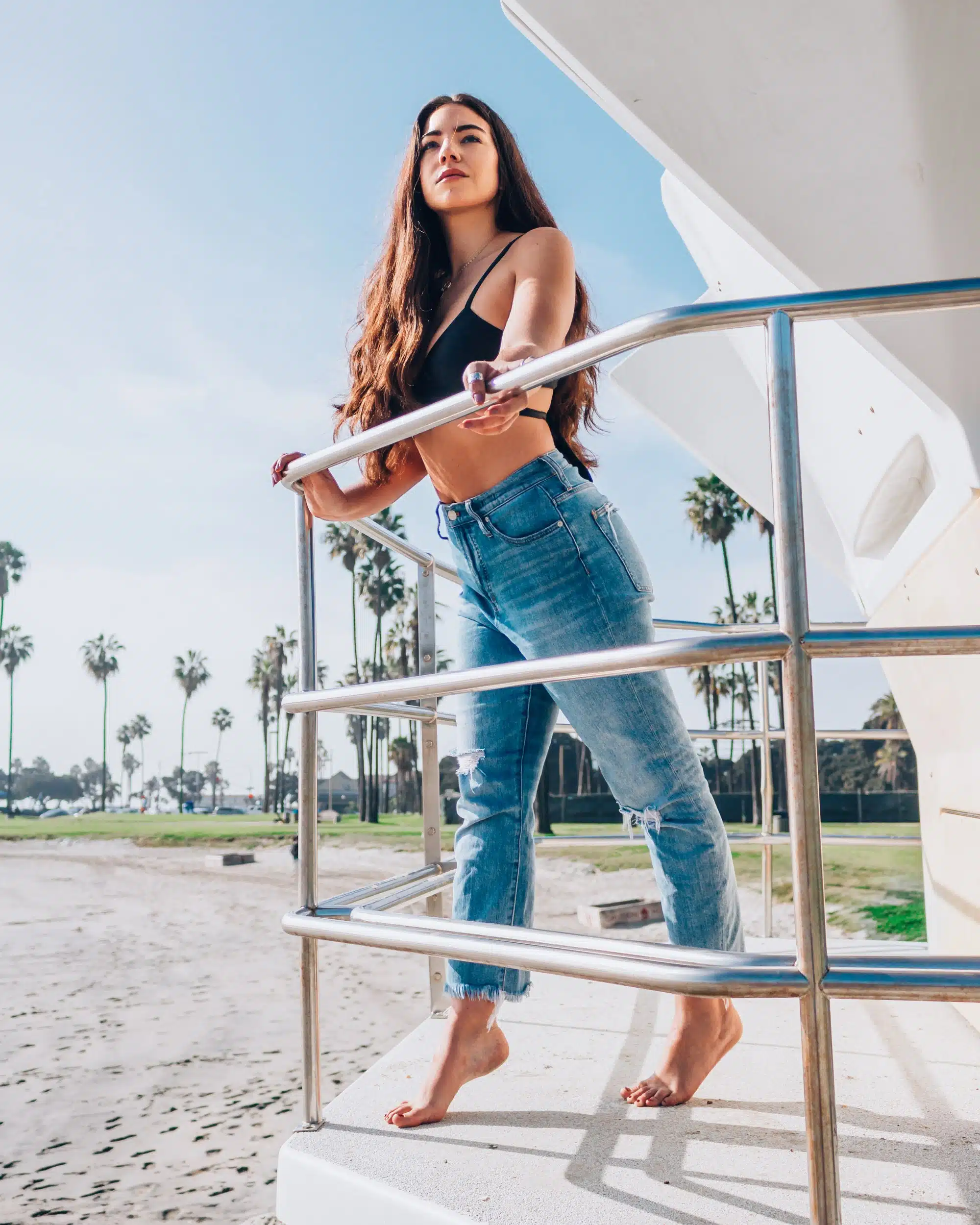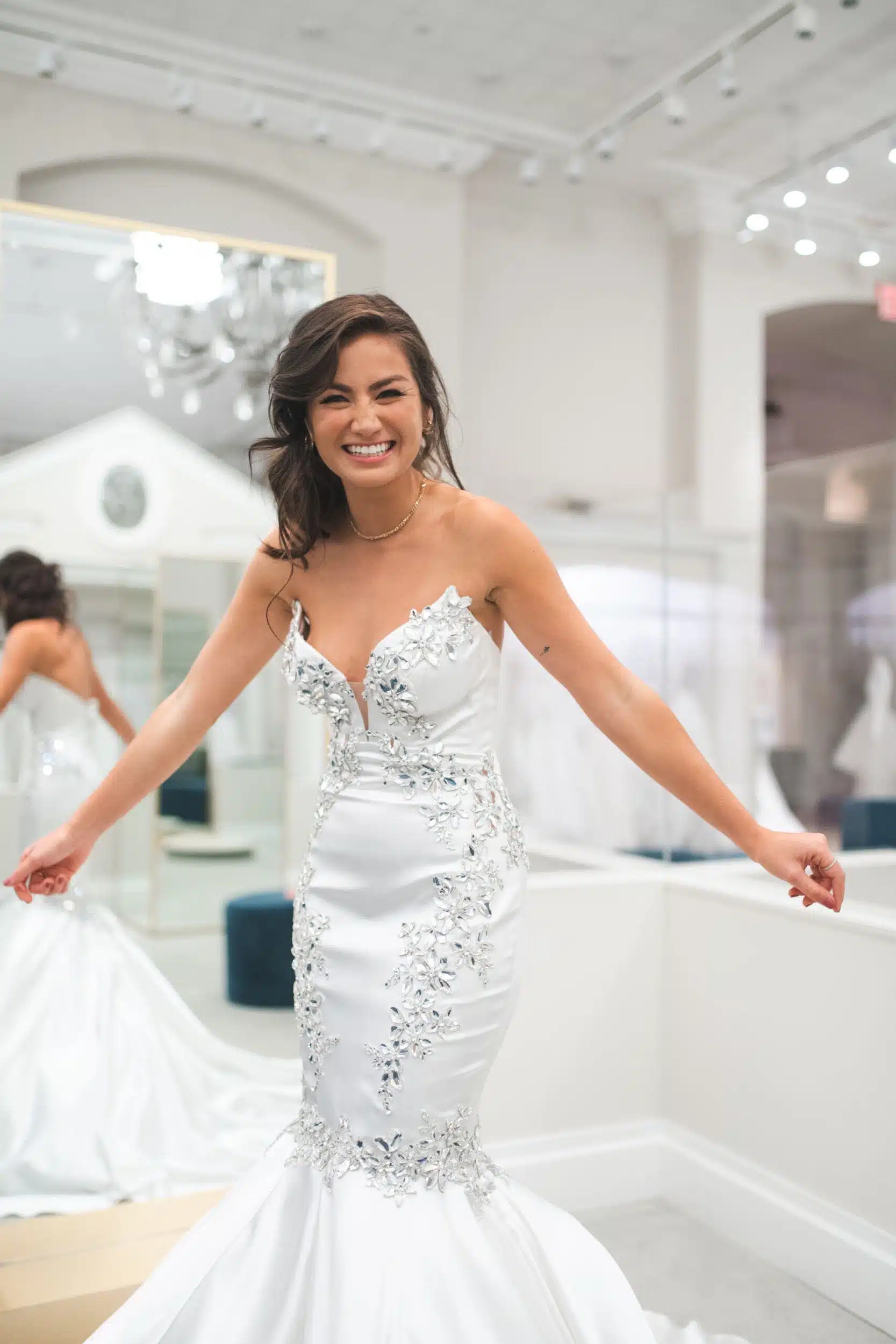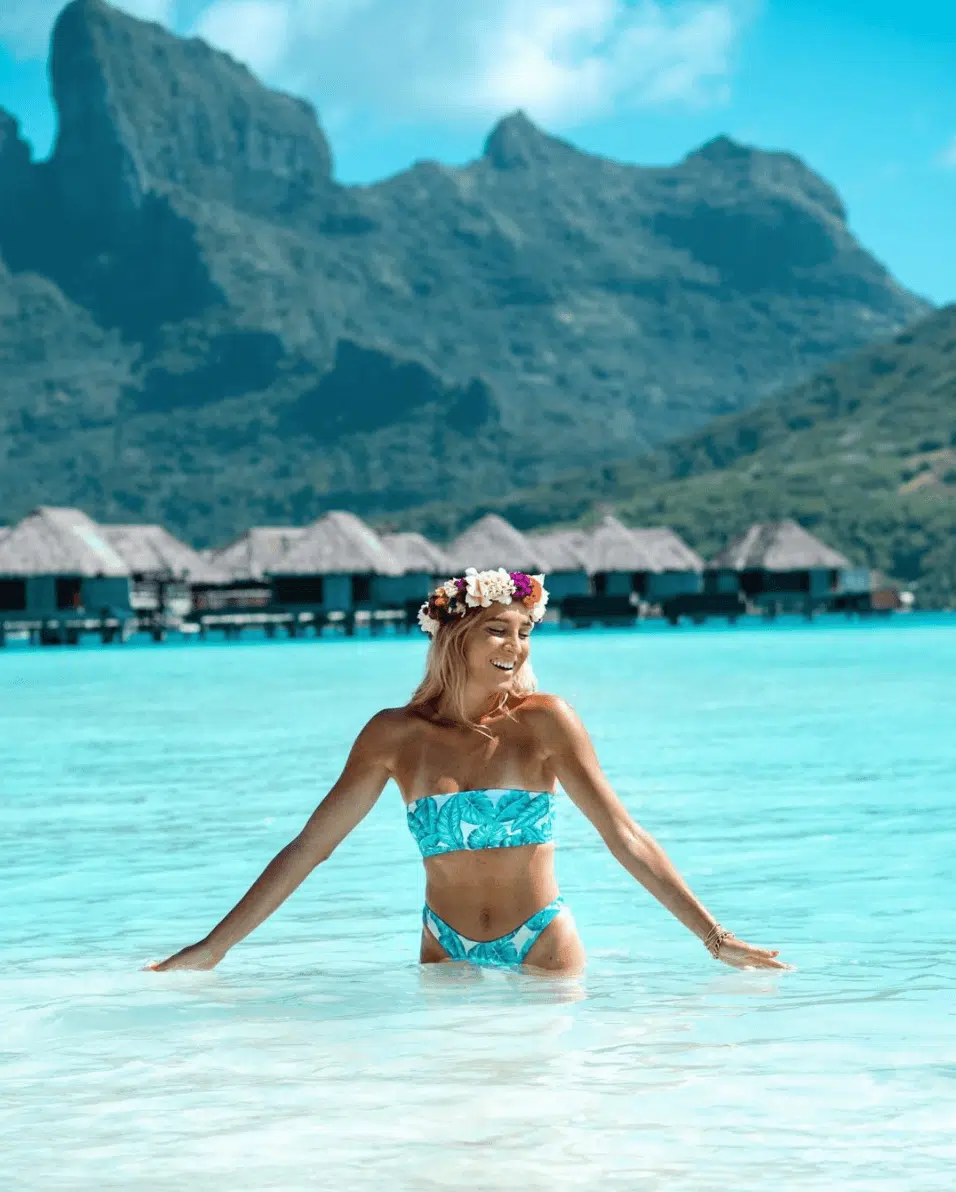I’m so excited to continue with my Woman Crush Wednesday series! And I have such a fun Q&A lined up today!
Today I’m chatting with Suze Riley, who I met at Alt Summit last month (right before shit really hit the fan with Coronavirus). Suze was one of the very talented artists at Alt making art for attendees, and her incredible papercut portraits were naturally very popular. She was so kind to squeeze me into her already jam-packed schedule and as we were chatting while she sketched me, I knew I had to interview her for WCW!
Between receiving my papercut portrait in the mail and chatting with Suze over the phone (we were supposed to meet for coffee but you know, #quarantine), connecting with Suze and hearing her story has been such a bright spot during this tough time.
And I’m super excited to share that Suze is giving away custom papercut portraits to three What The Fab readers! Her portraits are so special and unique—receiving one in the mail will absolutely make your day. I have mine sitting on my desk and I just love it. You can enter via my post on Insta.
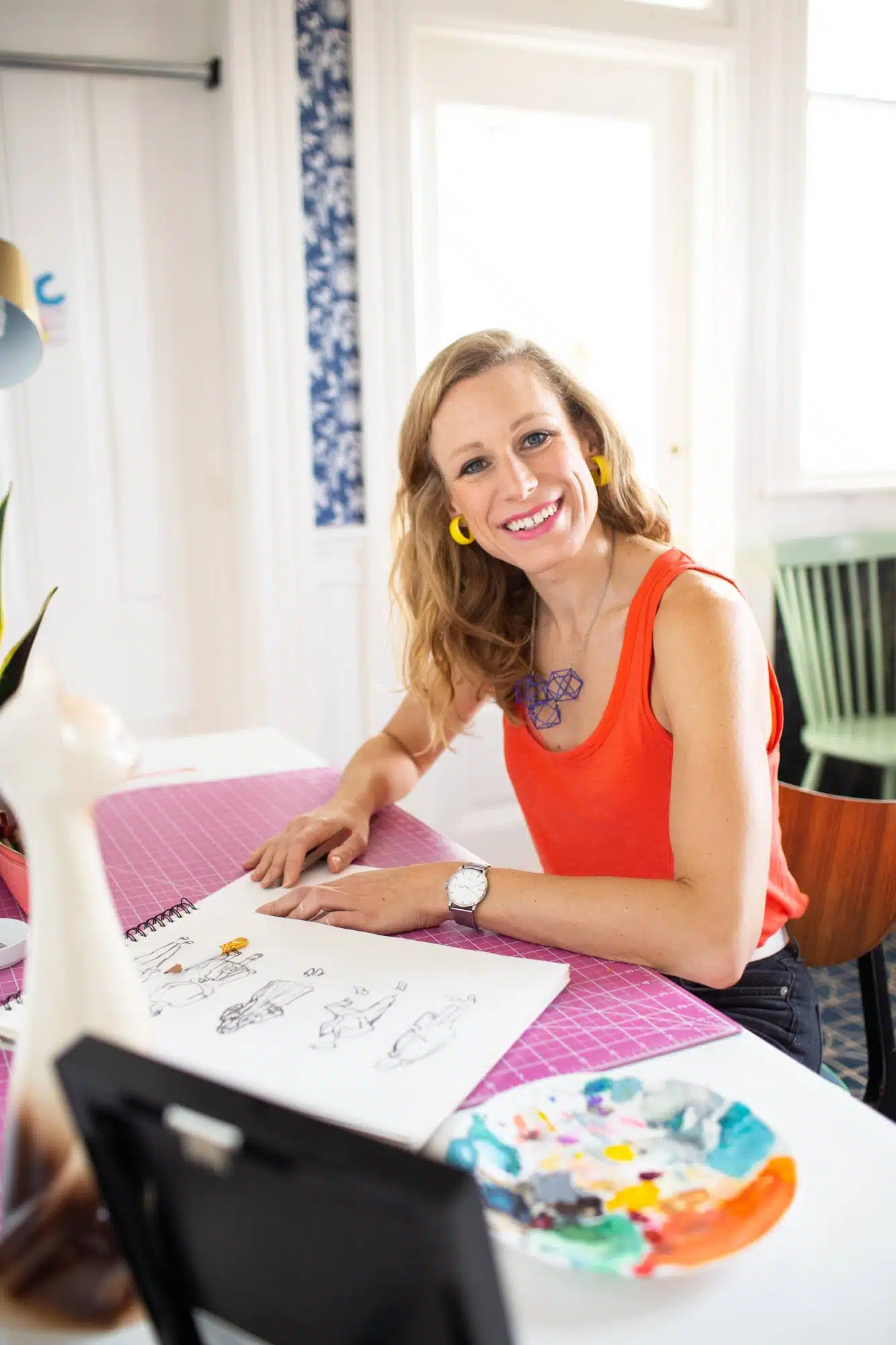
You’re very artistic and talented—what different art forms have you done over the years, what did you go to school for, and how did that translate to what you do now? How did you get into papercut art?
I studied English, Math, and Art for A Level (A Levels are the exams you take before college in the UK). I got really into oil painting and I would ask friends to pose for me—I’d do these large paintings that would take me weeks to complete. I ended up going to college for Illustration, and around that time I started doing papercutting. I had a tendency when I was drawing to put too much detail in, so papercutting was a way to force myself to focus on the elements and not overwork things. At college, life drawing was a constant thing. I think studying the human form in so much depth back then gave me the grounding for what I’m doing now.
I’ve always been interested in form and composition and the idea that what you leave out is more important than what you leave in. I ask myself, how much can I strip a picture down to the basic elements that still give the unmistakable look & character of my subject?
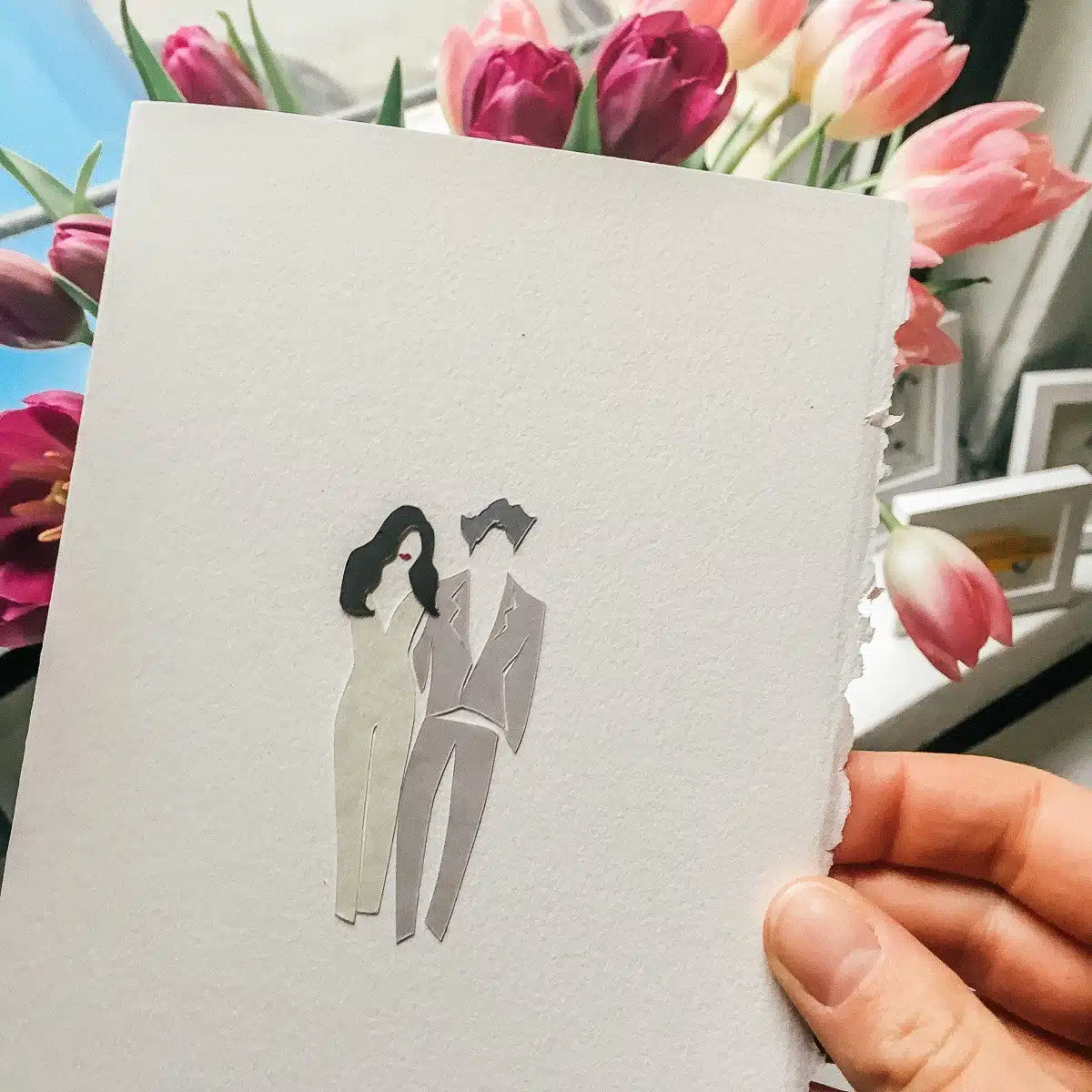
I took a scroll through your Instagram and it looks like when you first started doing papercutting, the subjects were a lot of candy, beachy vibes, motels—so fun!! How did you transition into incorporating people? What was the spark for you?
I used to love visiting random English seaside towns and drawing the people walking by, quirky arcade machines on the pier, women in old fashioned swimsuits and hats. I’ve always had this thing about old fashioned seaside-y places and retro signage. The nostalgia of happy times, holidays, and families. When I moved to America, I was like a kid in a candy store with all the neon signs and 1950s motels and diners. That has been one of the main sources of inspiration for my art.
I think people have always been at the heart of my work, but I had this long stretch of time where I was working on other things and lost touch with that. When I had my first daughter I started doing silhouette portraits of my friends’ kids and ended up selling them. But a lot of people make silhouette portraits in that classic black-on-white profile style, and I felt like there wasn’t anything about mine that made them stand out.
Then three years ago, some good friends of mine got married, and I made a minimal papercut portrait of the two of them in their wedding outfits. The lovely reaction I had to that portrait felt different from the reactions to other work I’d been doing. I started doing more portraits in that style and last September decided to pitch to be an artist at this year’s Alt Summit. I wanted to perfect my craft of making the portraits, so I started a 100 days project, doing 5×7 size portraits of women as gifts for people all over the world. And that led to my project at Alt.
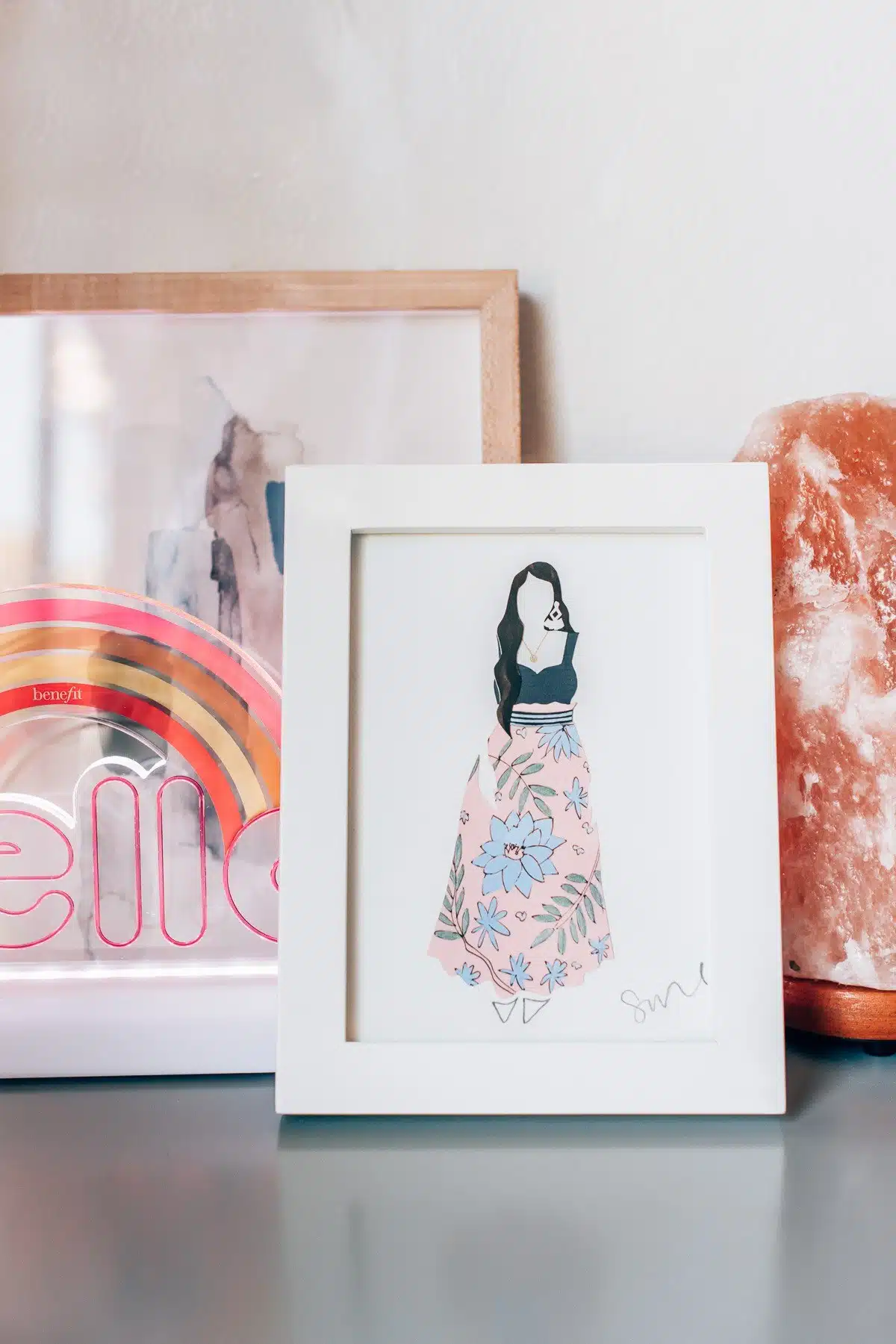
How was Alt Summit for you? You were very popular! But it also must have been a bit overwhelming!
Alt was crazy and I was not expecting that! I was worried no one would come to get their portrait made by me because there’s so much going on and people’s time is so precious. I was just blown away by how many people came by. On the second day I came down to my booth, there was this huge line and I thought, “What are those people waiting for?” And then I realized they were queuing up for my sign up form to open! It was this amazing moment and realization that they were there for me and my work. It was such a lovely compliment.
The other incredible thing was the conversations I had with people while I was sketching them. It’s quite a vulnerable thing to open yourself up to be drawn and seen in that way. People don’t know me and they’re putting their trust in me to make a representation of them. And it’s vulnerable on my part too, because I’m creating a piece of art, representing how I see you, and I’m offering that up to you to be judged.
I think it was this mutual vulnerability that led to some really deep conversations with people that were so special and fascinating. People shared their hopes and dreams with me, their grief, insecurities, shame, worries. It was a really overwhelming human experience, and a deep connection that was so special on many levels.
Tell us about your former job in the corporate world working as Head of Digital Marketing at Penguin Random House in the UK, leading marketing campaigns for books like The Girl on The Train.
I’d worked a few different jobs after graduating before getting my first marketing job at Random House, which was a dream come true because I loved writing and words as much as I loved art. I feel so fortunate to have met such wonderful people through working in publishing, colleagues who’ve become lifelong friends, incredible authors I worked with for years like Lee Child and Sophie Kinsella. The Girl on the Train was one of those books that straight away everyone thought was special and I was so lucky to land it as one of my marketing titles to work on. To see where it has ended up since those early days has been one of the highlights of my publishing career, to think I played a small part when it first came out.
How did you decide to leave your corporate job and launch your art business full time? What led you there?
I was on maternity leave and remember it took me about six weeks to stop worrying about work. It took stepping away completely for me to realize how anxious I had been, and question whether I wanted to go back to that. My husband is American and we’d always talked about moving to the States at some point. An opportunity came up for us to move to New York, I’d always dreamed of living there, and we decided to go for it.
It was a hard decision to leave my full-time job. Aside from the financial security, I was also worried I would lose a big part of my identity because I’d tied it so closely to my job title and the company and authors I worked for. I guess I had attached my own sense of being interesting, success, and validation to those things. When I look back on that time I see I was chasing the goals of the institution and the goals of other people, rather than goals that were inherently my own.
Soon after moving to New York, a friend gave me a copy of The Artist’s Way. I reached the point where Julia Cameron talks about the shadow artist, a creative person who is working in a career close to the life they would like to have, but that they are afraid to pursue themselves. And I realized that’s exactly what I’d been doing. I thought, I don’t want to spend the rest of my life marketing other people’s work and leaving my own dreams unfulfilled because I was too scared to put my work out there. Now, over 15 years after graduating art school, I finally feel like I’m doing what I’m meant to be.
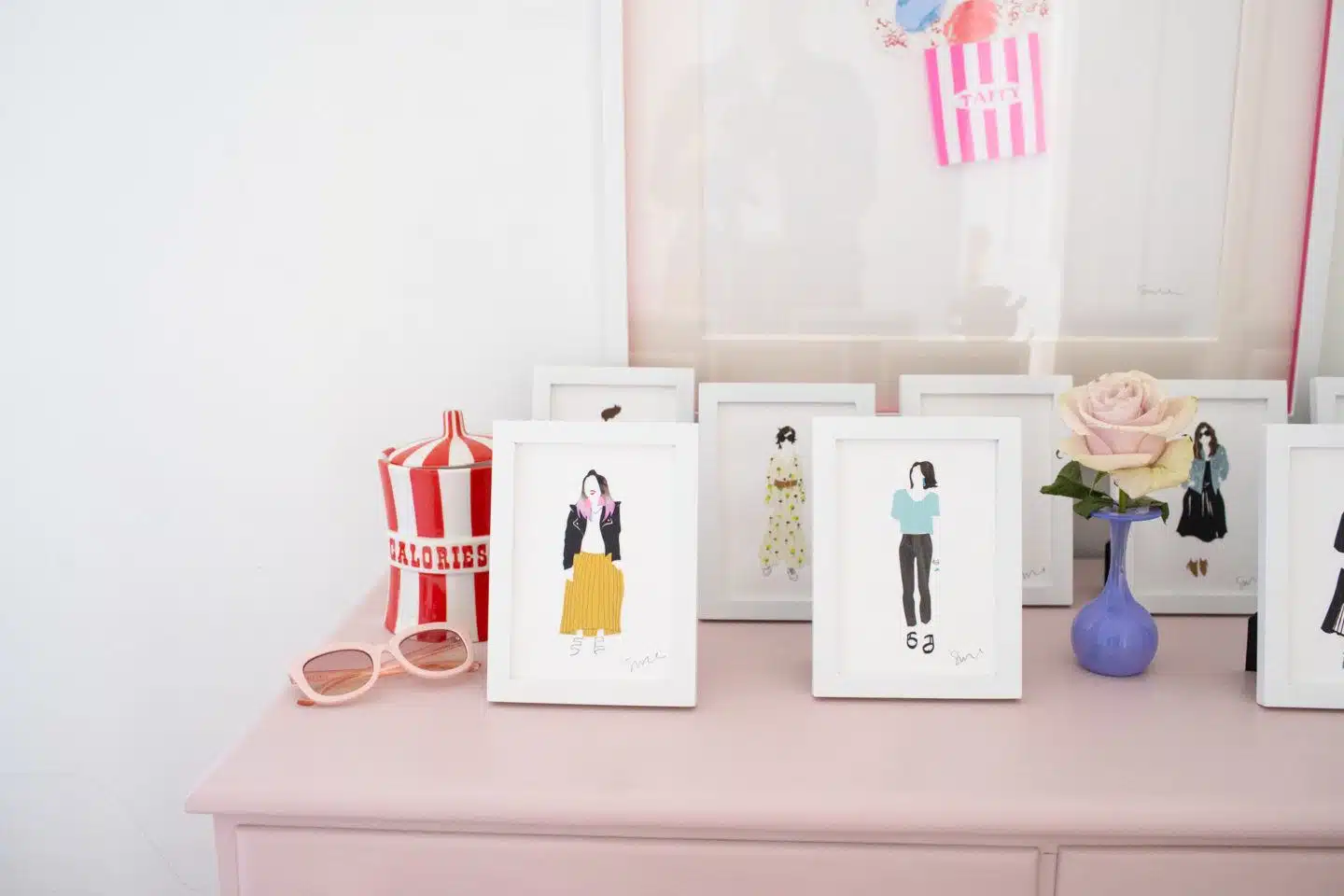
What’s your best advice for someone who wants to turn their creative passions into a career?
Testing your proof of concept as a side project to your current career is a great way to start. That gives you the freedom to explore your passion and get really good at your craft, without putting the financial pressure on your creativity to pay the bills. I love how Liz Gilbert talks about this in Big Magic. It’s a beautiful thing if you can take time to play and experiment, to try out different things and tune into what people connect with.
I was fortunate to be in a relationship where, between us, we agreed I could step back from earning a regular salary to focus on building my work as an artist. I have had another baby since then, which of course shifts the amount of time you’re able to dedicate to growing a small business.
It’s also so important to value your time and work. At events, I’ll have people come up and ask how much my art is, and some will be like, “Oh ok, no thanks.” And then others come up and say, “That’s ridiculous, you’re undercharging!” You have to trust that your true customers will find you and will be happy to pay for it at the price you believe is right.
As women we can undervalue ourselves—if you identify with that, and worry about what people think of how much you are asking, I find it can help to think of it as something you’re doing for other women as well, not just yourself. That, by charging an amount that truly reflects the time and skill you’ve put into a piece, you’re encouraging other women to value their own work more highly too.
Okay, how awesome is Suze?? You can find her on Instagram @suzecutspaper, and see more of her beautiful work on her website!
Have a suggestion for the next boss babe I should interview for Woman Crush Wednesday (or want to toss your own name into the ring?)? Shoot me an email at: [email protected].
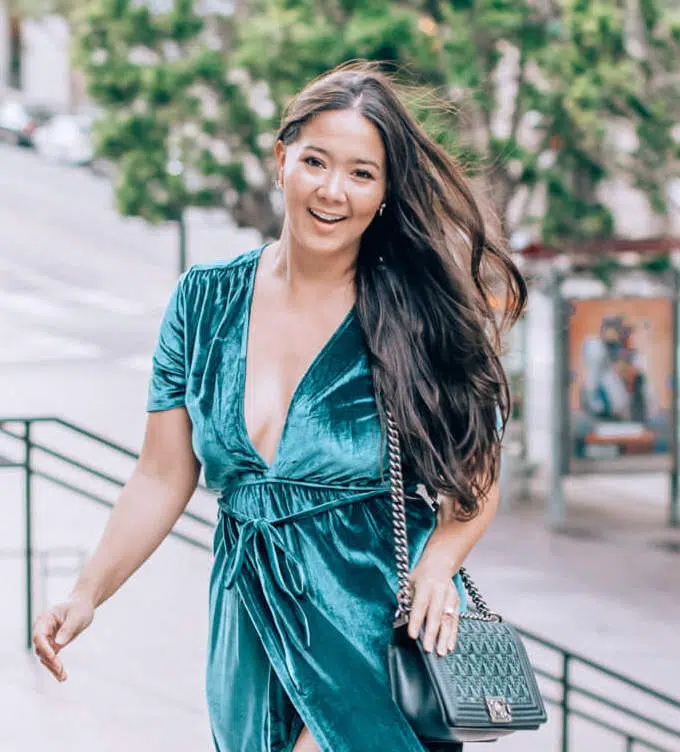
Elise Armitage is an entrepreneur and founder of What The Fab, a travel + lifestyle blog based in California. At the beginning of 2019, Elise left her corporate job at Google to chase her dreams: being an entrepreneur and helping women find fabulous in the everyday. Since then, she’s launched her SEO course Six-Figure SEO, where she teaches bloggers how to create a passive revenue stream from their website using SEO. Featured in publications like Forbes, Elle, HerMoney, and Real Simple, Elise is a firm believer that you can be of both substance and style.

